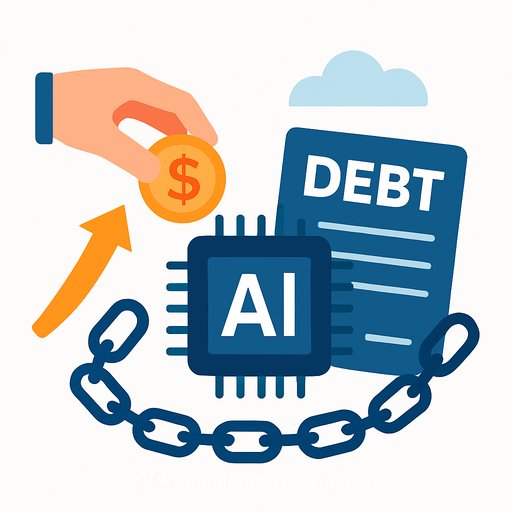Generative AI and the CFO: Transforming Finance into a Growth Engine
There's a new question in every boardroom: As CFO, what's your AI strategy? It's a litmus test for leadership. Not a tech line item. A decision about capital, control, and how fast your company learns.
Why CFOs Can't Sit This Out
Industry data shows 44% of CFOs are actively building AI-powered futures, and a third are putting generative AI into financial operations. That's not experimentation-it's the next battleground for margins and resilience. In a market with expensive capital and shaky demand, precision beats instinct. AI gives you precision forecasting, sharper risk control, and clearer value creation.
AI Beyond Buzzwords: What Works Now
- Automated finance functions: Cut cycle times in expense reporting, compliance checks, accounts payable, and treasury. Days become seconds, errors drop, audit trails improve.
- Predictive forecasting: ML models pick up shifts in volume, price, and input costs. You reallocate capital before the market does.
- Generative narratives: Turn complex models into investor-ready insights. Cleaner board materials, tighter earnings scripts, faster Q&A prep.
- Risk intelligence: Anomaly detection and continuous monitoring strengthen fraud prevention and compliance. Fewer surprises, better controls.
These aren't nice-to-haves. They drive cost, speed, and confidence-three things the market rewards.
The CFO as the Corporate AI Architect
AI is not just a technology decision. It's capital allocation, risk appetite, and governance. That makes the CFO the natural owner, in tight partnership with the CIO/CTO. Lead the portfolio, set thresholds, and communicate the plan to investors.
Build the AI Playbook
- Define business-critical outcomes: Tie every project to margin expansion, working capital efficiency, cash conversion, or shareholder returns.
- Invest in data infrastructure: Fund clean, governed, enterprise-wide data. No clean data, no real gains.
- Balance risk and ROI: Use risk-adjusted return models. Include regulatory, ethical, and reputational factors alongside efficiency gains.
- Empower talent with AI tools: Upskill finance teams to move from data entry to decision support. Redeploy FTE capacity, don't just cut it.
- Embed governance and transparency: Document models, data lineage, and control points. Align with frameworks like the NIST AI Risk Management Framework.
From Idea to Impact: A 90-Day Motion
- Weeks 1-2: Baseline KPIs (close time, forecast error, DSO/DPO, fraud losses). Select two high-ROI use cases and define risk guardrails.
- Weeks 3-6: Run a data quality sprint. Stand up pilots in AP automation and rolling forecast. Add human-in-the-loop review and audit logs.
- Weeks 7-10: Measure deltas vs. baseline. Tighten controls, finalize data retention and access policies. Draft the board narrative.
- Weeks 11-12: Scale or stop. Lock budget, vendor terms, and a quarterly value tracking cadence.
Metrics Boards Care About
- Close cycle time (days to close) and manual journal entries reduction
- Forecast accuracy (MAPE) and scenario speed (time to reforecast)
- Working capital lift (DSO, DPO, inventory turns)
- Fraud loss rate and compliance exceptions per quarter
- Opex savings and FTE redeployed to analysis
- Model auditability: documented lineage, controls, and sign-offs
Competitive Advantage: What It Looks Like
- Global bank: Real-time compliance monitoring reduces exceptions and fines.
- Private equity: AI-enhanced valuation and exit timing improve fund IRR.
- Consumer goods: Demand forecasting protects margins during promotions and supply shocks.
The Boardroom Conversation Has Shifted
When AI comes up, the CFO should answer first. Be ready to show where AI cuts cost today, where it creates new value tomorrow, and how risks are managed transparently. Keep it concrete, metric-backed, and tied to strategy.
- What costs dropped and by how much?
- What decisions got faster and more accurate?
- What new value streams are in flight?
- What controls, audits, and policies govern the models?
Final Takeaway
AI is the biggest shift in corporate finance since digital markets. The question isn't whether you engage-it's how you lead. CFOs who set the agenda, fund the data, and enforce governance will turn AI into a growth engine and set the standard for financial leadership.
Want a curated view of practical tools for finance? Explore AI tools for finance or browse AI courses by job role to upskill your team.
Your membership also unlocks:






